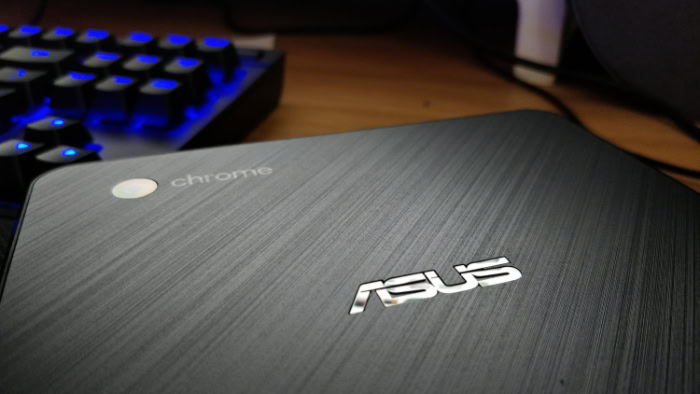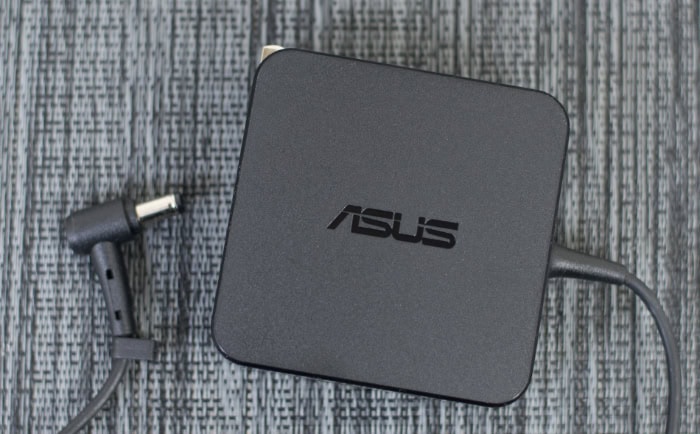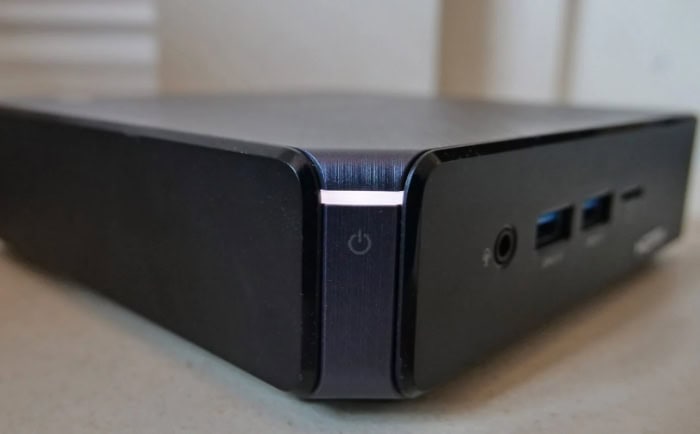What Is a Chromebox? Chrome OS Power in a Compact Form

The rise of cloud computing has revolutionized the way we work, learn, and play. As more people embrace the simplicity and affordability of cloud-based devices, a lesser-known but increasingly popular option has emerged: the Chromebox.
These compact, powerful machines offer a compelling alternative to traditional desktop computers, delivering a streamlined user experience and robust performance.
Chromeboxes Explained: A Compact Computing Solution
Chromeboxes are small, powerful desktop computers that run on Google’s Chrome OS, a lightweight and secure operating system designed for speed and simplicity. These devices offer a unique computing experience, focusing on cloud-based applications and storage, making them an attractive option for users who prioritize efficiency and ease of use.
Chromeboxes vs. Chromebooks: What Sets Them Apart?
While Chromeboxes and Chromebooks share the same operating system, there are notable differences between the two. Chromebooks are portable laptop devices, while Chromeboxes are compact desktop computers that require an external monitor, keyboard, and mouse.
This makes Chromeboxes an ideal choice for users who prefer a stationary workstation or need to connect to larger displays.
The Defining Features of Chromeboxes
Chromeboxes boast several features that set them apart from traditional desktop computers:
- Speed and Efficiency: With Chrome OS, Chromeboxes boot up quickly and run smoothly, even with multiple tabs and applications open.
- Security: Automatic updates and built-in virus protection keep Chromeboxes secure, reducing the risk of malware and data breaches.
- Cloud Integration: Chromeboxes seamlessly integrate with Google’s suite of cloud-based tools, such as Google Drive, Docs, and Sheets, enabling easy access to files and collaboration from anywhere.
- Affordability: Compared to traditional desktop computers, Chromeboxes often come at a lower price point, making them an attractive option for budget-conscious users.
The Evolution of Chromebox Hardware
Since the introduction of the first Chromebox by Samsung in 2012, these devices have undergone significant improvements in terms of performance and design.
The original Samsung Chromebox featured a 1.9 GHz Intel Celeron processor, 4GB of RAM, and a 16GB solid-state drive. While groundbreaking at the time, today’s Chromeboxes offer much more powerful specifications, with options for Intel Core i3, i5, and i7 processors, up to 16GB of RAM, and larger storage capacities.
Sleek Designs and Versatile Connectivity
Modern Chromeboxes come in sleek, compact designs that easily fit into any workspace. They offer a range of ports, including USB, HDMI, and Ethernet, allowing users to connect various peripherals and displays.
Some models even support 4K resolution, providing stunning visual clarity for media consumption and creative work.
Chromebox Hardware: A Closer Look
To truly appreciate the capabilities of Chromeboxes, it’s essential to understand the hardware that powers these compact devices.
Processor Options: From Celeron to Core i7
Chromeboxes come with a range of Intel processor options, catering to different performance needs and budgets:
- Celeron: Entry-level Chromeboxes often feature Intel Celeron processors, which provide sufficient power for basic tasks like web browsing, email, and document editing.
- Core i3: Mid-range Chromeboxes with Intel Core i3 processors offer improved performance, making them suitable for more demanding tasks and multitasking.
- Core i5 and i7: High-end Chromeboxes boast Intel Core i5 or i7 processors, delivering exceptional performance for resource-intensive applications, video editing, and gaming.
RAM and Storage: Finding the Right Balance
When choosing a Chromebox, it’s crucial to consider the amount of RAM and storage that best suits your needs:
- RAM: Chromeboxes typically come with 4GB to 16GB of RAM. For basic tasks, 4GB is sufficient, while 8GB or more is recommended for heavy multitasking and running multiple applications simultaneously.
- Storage: Most Chromeboxes feature solid-state drives (SSDs) ranging from 32GB to 256GB. Since Chrome OS relies heavily on cloud storage, the internal storage capacity may be less critical than in traditional desktop computers. However, if you plan to store large files or install many apps, opting for a larger SSD is advisable.
Connectivity and Ports: Versatility at Your Fingertips
Chromeboxes offer a wide array of ports and connectivity options, ensuring compatibility with various peripherals and displays:
- USB: Most Chromeboxes include several USB ports (USB 3.0 and USB-C) for connecting keyboards, mice, external storage devices, and other accessories.
- HDMI: An HDMI port allows you to connect your Chromebox to an external monitor or TV, often supporting resolutions up to 4K.
- Ethernet: For a stable and fast internet connection, Chromeboxes feature an Ethernet port, while also supporting Wi-Fi for wireless connectivity.
- Audio: A 3.5mm audio jack enables you to connect headphones or external speakers for a better audio experience.
Popular Chromebox Models: ASUS, Acer, and HP
Several renowned manufacturers offer Chromebox models, each with unique features and specifications:
- ASUS Chromebox: ASUS offers a range of Chromeboxes with Intel Celeron, Core i3, and Core i7 processors, up to 16GB of RAM, and storage options up to 256GB. Some models even support dual 4K displays, making them ideal for productivity and entertainment.
- Acer Chromebox: Acer’s Chromeboxes come with Intel Celeron or Core processors, up to 16GB of RAM, and storage options up to 128GB. They feature a compact design and a wide range of ports, making them suitable for various use cases.
- HP Chromebox: HP’s Chromebox lineup includes models with Intel Celeron, Core i3, and Core i5 processors, up to 16GB of RAM, and storage options up to 128GB. Some models are designed for enterprise use, with enhanced security features and management tools.
The Power of Chrome OS: Simplicity Meets Functionality

At the heart of every Chromebox lies Chrome OS, a lightweight and intuitive operating system designed by Google. Chrome OS offers a unique set of advantages that set it apart from traditional operating systems, focusing on simplicity, security, and speed.
Automatic Updates and Cloud-Based Management
One of the most significant benefits of Chrome OS is its seamless update process. Chromeboxes automatically download and install updates in the background, ensuring that your device always has the latest features, security patches, and performance improvements.
This eliminates the need for manual updates and reduces the risk of vulnerabilities.
Additionally, Chrome OS leverages cloud-based management, allowing users to access their files, settings, and applications from any device with an internet connection. This makes it easy to switch between devices or collaborate with others, as your data is always synchronized and up-to-date.
Expanding Functionality with Android and Linux Apps
While Chrome OS initially focused on web-based applications, recent developments have significantly expanded its capabilities. Chromeboxes now support running Android apps, giving users access to a vast library of mobile applications directly on their desktop.
This opens up new possibilities for productivity, entertainment, and creativity.
Furthermore, Chrome OS also supports Linux apps, which is particularly useful for developers and advanced users who require specific tools or software not available through web or Android apps. This added flexibility makes Chromeboxes more versatile and capable of handling a wider range of tasks.
Offline Capabilities and Limitations
Although Chrome OS is designed with cloud connectivity in mind, it also offers offline capabilities for certain tasks. Many Google apps, such as Google Docs, Sheets, and Slides, allow users to work offline and automatically sync changes when an internet connection is restored.
Some third-party apps also offer offline functionality, ensuring that you can continue working even without an internet connection.
However, it’s important to note that offline capabilities may be limited compared to traditional operating systems. Some tasks, such as video editing or advanced photo manipulation, may require online tools or may not be as efficient on a Chromebox.
Chrome OS vs. Windows and macOS
When comparing Chrome OS to Windows and macOS, there are several pros and cons to consider:
Pros of Chrome OS:
- Simplicity and ease of use
- Fast boot times and smooth performance
- Automatic updates and strong security
- Seamless integration with Google services
- Affordable hardware options
Cons of Chrome OS:
- Limited offline capabilities for certain tasks
- Reduced compatibility with some hardware and software
- Dependence on internet connectivity for full functionality
- Less suitable for advanced or specialized tasks
Chromeboxes in Real-World Scenarios
Chromeboxes have proven to be versatile devices, suitable for a wide range of applications and environments. From businesses and educational institutions to homes and public spaces, Chromeboxes offer unique advantages that make them an attractive choice for various use cases.
Streamlining Business Operations and Reducing IT Costs
In the business world, Chromeboxes have gained popularity for their ability to streamline workflows and reduce IT costs. With Chrome OS’s cloud-based management, businesses can easily deploy and manage a fleet of Chromeboxes from a central location.
This simplifies device provisioning, software updates, and security management, saving time and resources for IT departments.
Moreover, the affordability of Chromeboxes compared to traditional desktop computers allows businesses to lower their hardware costs without compromising on performance or functionality. This is particularly beneficial for small and medium-sized enterprises looking to maximize their IT budget.
Enhancing Education and Learning Experiences
Chromeboxes have also found a place in classrooms and computer labs, thanks to their simplicity, security, and collaborative features. With Google Workspace for Education, students and teachers can easily create, share, and collaborate on documents, presentations, and projects using Chromeboxes.
The automatic updates and built-in security features of Chrome OS ensure that educational institutions can maintain a safe and secure learning environment, reducing the risk of malware and data breaches. Additionally, the affordable price point of Chromeboxes makes it easier for schools to provide access to technology for all students, promoting digital literacy and equal learning opportunities.
Transforming Home Computing and Entertainment
For home users, Chromeboxes offer a simple and efficient solution for everyday computing needs and entertainment. As family PCs, Chromeboxes provide quick access to web browsing, email, social media, and online services, without the complexity and maintenance requirements of traditional operating systems.
Chromeboxes can also serve as media centers, allowing users to stream movies, TV shows, and music from popular platforms like Netflix, YouTube, and Spotify. With the ability to connect to large displays via HDMI and support for 4K resolution, Chromeboxes deliver an immersive entertainment experience in a compact and affordable package.
Powering Digital Signage and Interactive Kiosks
Beyond personal and business use, Chromeboxes have found a niche in powering digital signage and interactive kiosks. The small form factor, low power consumption, and reliability of Chromeboxes make them ideal for displaying information, advertisements, and multimedia content in public spaces, such as retail stores, airports, and museums.
With the ability to run web-based applications and support for touch screens, Chromeboxes can also be used to create interactive experiences, such as self-service kiosks, product demonstrations, and information points. The ease of management and remote control capabilities of Chrome OS make it simple to update and maintain these installations, ensuring a seamless and engaging user experience.
Evaluating Your Options: Chromeboxes and Alternatives

When considering a Chromebox for your computing needs, it’s essential to compare it with alternative devices to ensure you make the best choice.
Chromeboxes vs. Traditional Desktop PCs
Compared to traditional desktop PCs, Chromeboxes offer several advantages:
- Performance: While Chromeboxes may not match the raw power of high-end desktop PCs, they provide sufficient performance for most everyday tasks, thanks to their efficient use of hardware resources and the lightweight nature of Chrome OS.
- Flexibility: Chromeboxes offer a high degree of flexibility in terms of workspace setup, as they can be easily connected to various displays, keyboards, and mice. This allows users to create a customized workstation tailored to their preferences.
- Cost: In most cases, Chromeboxes are more affordable than traditional desktop PCs, making them an attractive option for budget-conscious users or organizations looking to deploy a large number of devices.
However, traditional desktop PCs still have the edge when it comes to running specialized software, such as advanced video editing tools or demanding games, which may not be available or optimized for Chrome OS.
Chromeboxes vs. Mini PCs
Mini PCs, such as Intel NUCs or Mac Minis, offer another compact computing solution. When comparing Chromeboxes to mini PCs, consider the following:
- Operating System: Mini PCs typically run Windows or macOS, providing access to a wider range of software applications. However, this also means they may require more maintenance and updates compared to the streamlined Chrome OS.
- Performance: Mini PCs often have more powerful hardware options, making them suitable for demanding tasks like video editing or gaming. However, this increased performance comes at a higher price point compared to most Chromeboxes.
- Use Cases: Mini PCs are a good choice for users who require the full functionality of Windows or macOS, while Chromeboxes are ideal for those who primarily rely on web-based applications and value simplicity.
Is a Chromebox Right for You?
To determine if a Chromebox is the best choice for your needs, ask yourself the following questions:
- What are my primary computing tasks? If you mainly use web-based applications, such as Google Workspace, email, and online media consumption, a Chromebox will likely meet your needs.
- Do I rely on any specific software that is not available for Chrome OS? If you require specialized software that is only available for Windows or macOS, a Chromebox may not be the best choice.
- How important is ease of use and low maintenance? If you value a simple, intuitive interface and want to minimize time spent on device maintenance, a Chromebox offers a compelling advantage.
- What is my budget? Chromeboxes are often more affordable than traditional desktop PCs or mini PCs, making them a good choice for budget-conscious users.


